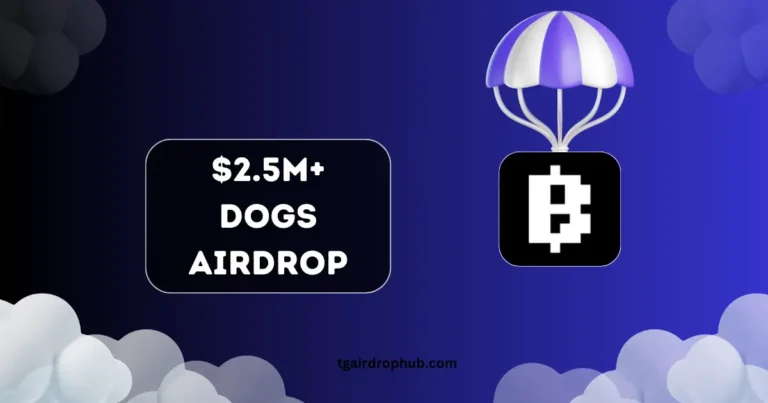Blum Question: Liquidity Pools Guide?
Liquidity pools are an essential component of decentralized finance (DeFi), providing the foundation for automated market-making (AMM) systems that allow for frictionless token swaps. These pools enable traders to exchange tokens without relying on traditional order books or market makers, creating a more accessible and efficient trading environment. Understanding how liquidity pools function is key to navigating the DeFi landscape, especially if you are interested in providing liquidity or trading on decentralized exchanges (DEXs).
Question & Answer Table
| Question | Answer |
|---|---|
| Liquidity Pools Guide? | BLUMERSSS |
What are Liquidity Pools?
At their core, liquidity pools are pools of tokens locked into smart contracts that facilitate decentralized trading. They form the backbone of AMM protocols like Uniswap, SushiSwap, and PancakeSwap. Unlike traditional exchanges, which match buyers and sellers via order books, AMMs rely on liquidity pools to allow users to trade tokens directly from the pool.
Liquidity providers (LPs) contribute tokens to these pools, and in return, they receive a share of the fees generated by trades. These pools ensure that there is always liquidity available for traders, eliminating the need for a middleman and offering a decentralized alternative to traditional exchanges.
How Do Liquidity Pools Work?
Liquidity pools function by locking pairs of tokens in a smart contract. For example, if you want to provide liquidity for the ETH/USDT trading pair, you would need to deposit an equivalent value of ETH and USDT into the pool. Once added, your assets become part of the pool, and traders can swap ETH for USDT or vice versa by interacting with the smart contract.
The price of tokens within a pool is determined algorithmically based on the ratio of the two assets in the pool. If a trader swaps ETH for USDT, the pool’s ETH balance decreases while the USDT balance increases, which results in the price of ETH rising in relation to USDT. This dynamic pricing model allows for continuous token swaps without the need for human market makers.
Why Are Liquidity Pools Important in DeFi?
Liquidity pools are critical to the functioning of decentralized exchanges and the DeFi ecosystem. Here’s why:
- Decentralization: By removing the need for centralized intermediaries, liquidity pools democratize access to trading and ensure that anyone can participate in providing liquidity or trading.
- Continuous Liquidity: Since liquidity pools are always available for trading, users can swap tokens at any time without waiting for a buyer or seller to appear.
- Earning Potential: Liquidity providers earn a portion of the transaction fees generated by the pool, which can be a lucrative way to earn passive income in the DeFi space.
Risks of Liquidity Pools: Impermanent Loss
While liquidity pools offer numerous benefits, they are not without risks. One of the most significant risks is impermanent loss, which occurs when the value of the tokens in a pool fluctuates relative to each other. If the price of one token changes significantly while you are providing liquidity, you could end up with fewer tokens than you initially deposited, leading to a loss.
Impermanent loss is a common risk for liquidity providers, especially in volatile markets. However, many DeFi platforms mitigate this risk by offering high rewards in the form of trading fees or incentive tokens, which can offset potential losses.
How to Provide Liquidity and Earn Rewards
Providing liquidity is straightforward, but it requires some planning and understanding of the risks involved. Here’s a step-by-step guide:
- Choose a Platform: Select a decentralized exchange like Uniswap, PancakeSwap, or SushiSwap, where you want to provide liquidity.
- Pick a Token Pair: You’ll need to choose a pair of tokens, such as ETH/USDT, and ensure you have an equal value of both tokens to deposit.
- Deposit Your Tokens: Once you’ve selected a pair, deposit your tokens into the liquidity pool. In return, you’ll receive LP tokens, representing your share of the pool.
- Earn Rewards: As traders swap tokens using the pool, you’ll earn a portion of the transaction fees. Some platforms also offer additional rewards in the form of governance tokens or other incentives.
- Withdraw Your Tokens: You can withdraw your tokens at any time, along with any accrued rewards. Keep in mind that the value of your LP tokens will depend on the performance of the assets in the pool.
Why Liquidity Pools Are the Future of Trading
Liquidity pools have revolutionized the way we trade tokens by providing a decentralized, trustless mechanism for token swaps. They enable anyone, anywhere, to become a market maker, earning passive income while supporting the DeFi ecosystem. With the continued growth of decentralized exchanges and DeFi platforms, liquidity pools are likely to become even more integral to the future of trading.
As more users participate in liquidity provision, the efficiency and liquidity of decentralized markets will only improve, making DeFi a more attractive option for traders and investors alike.
Conclusion: A Key Pillar of DeFi
Liquidity pools are a fundamental component of decentralized finance, offering an innovative solution to traditional trading mechanisms. By providing liquidity, users not only support the ecosystem but also stand to earn rewards, making it a win-win for everyone involved. However, it’s crucial to be aware of risks like impermanent loss and to carefully consider which token pairs to provide liquidity for.
Whether you’re looking to trade tokens, provide liquidity, or simply understand the mechanics of DeFi, liquidity pools are an essential concept that is shaping the future of finance.






One Comment